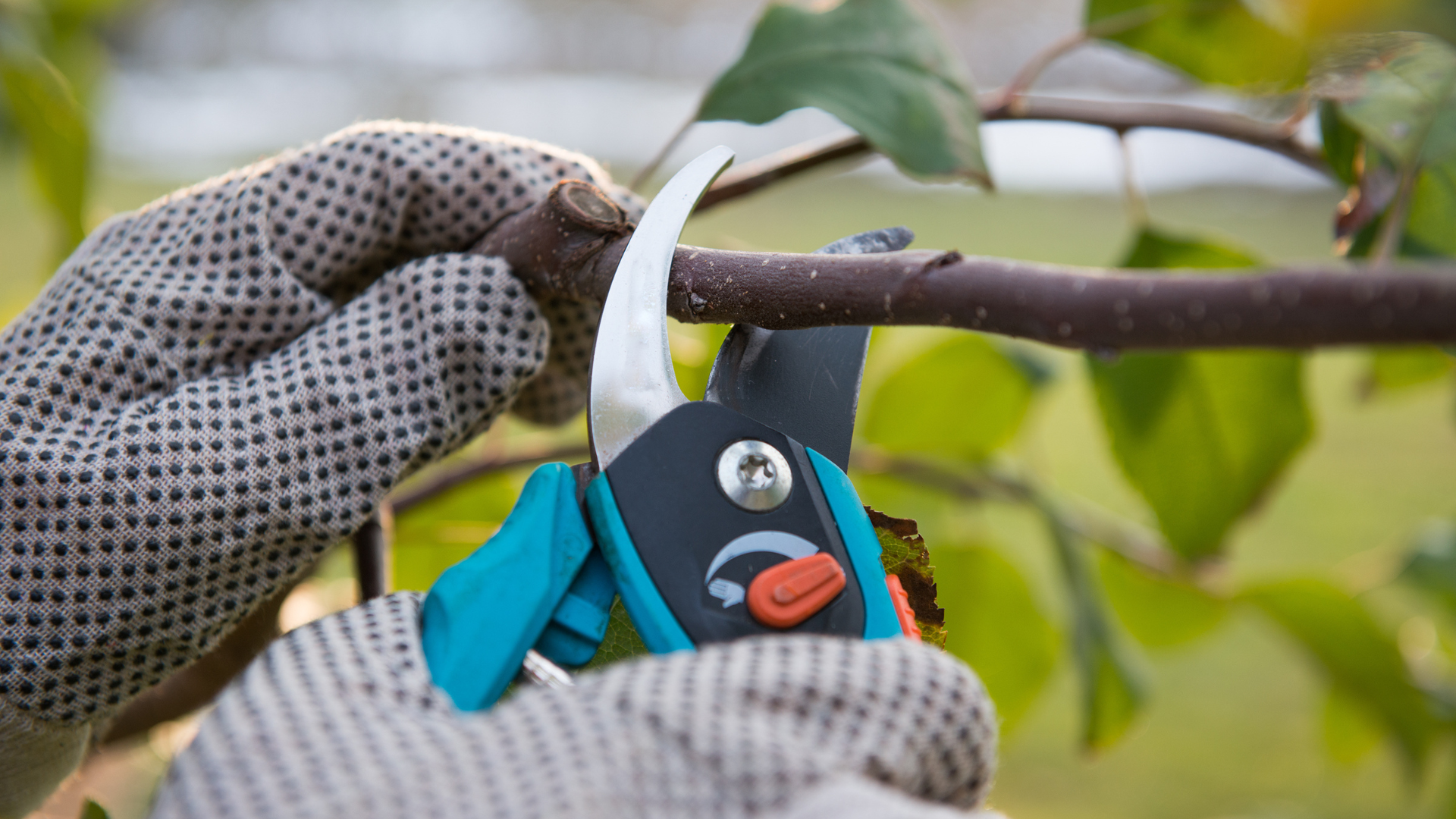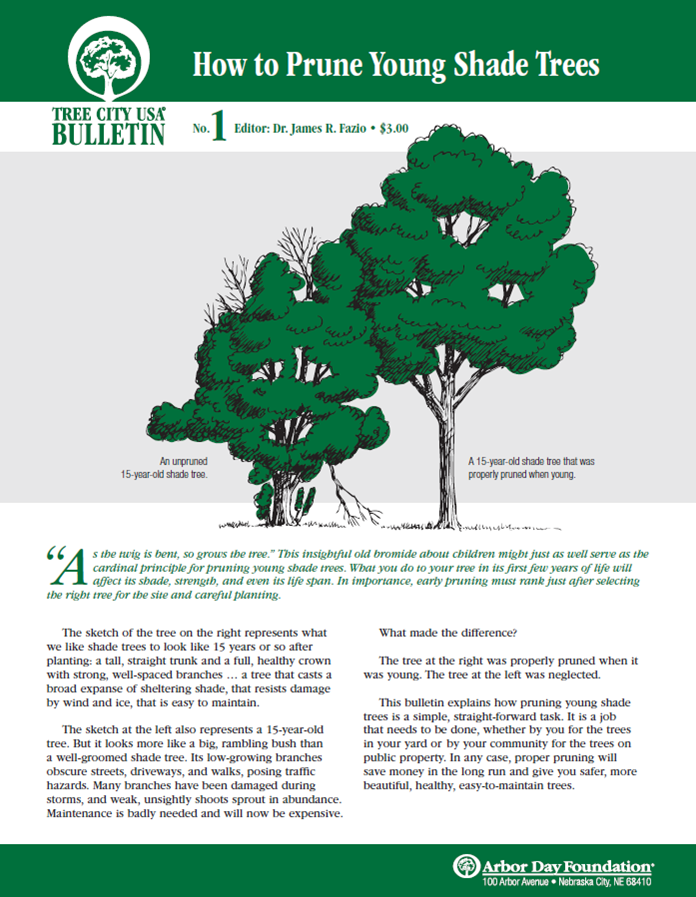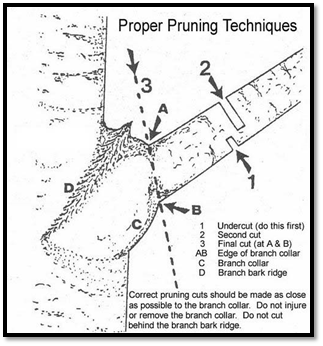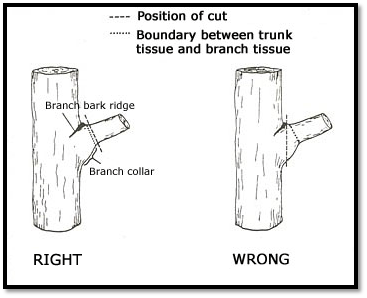- Pay Utility Bill
- Search

Tree Pruning
Pruning -The Do’s and Don’ts
Pruning can have many benefits. Encourages robust and healthy tree growth with a strong structure and not having compromised branch structure or improper weight distribution that could lead to disaster later in the tree’s life. Improper pruning practices can also have negative and permanent consequences leading to premature removal of the tree.
Pruning Young Trees. The most important time to prune is now.
Trees that receive the appropriate pruning measures while they are young require less corrective pruning as they mature. Smaller branch removal of 4” or less in diameter is highly recommended. Larger branch removal on mature trees is only advised if a hazard is present since it is less likely to seal.
At planting and the first few years it’s important to trim away only minor branch defects such as choosing a central leader if the species allows, and dead or damaged branches. Hold off on pruning young trees for 2-3 years after installing them. This allows for recovering from transplant stresses, root development and food storage the canopy provides Begin to encourage proper branching structure 2-3 years after planting.
Click here to watch a video from USU on how to prune young trees.
The First 15 years: The Importance of Pruning Early
Pruning Mid Aged and Mature Trees
Trimming a small tree with lightweight branches and a canopy at eye level is easy and manageable. However, trimming or removing larger trees itself is very dangerous and you should not attempt the work if you must climb a ladder to reach the branches, if it’s near a power line (very dangerous and against the law without the proper certifications), or large branches that are too heavy to handle. Large pruning jobs should absolutely be left to a professional certified arborist instead of risking both the tree’s safety and your own. You can find a certified arborist here at https://utahurbanforest.org/ or https://www.treesaregood.org/
Proper Pruning Principles
It is important to ask yourself the reasons for your intentions on pruning. Pruning is wounding and every cut has the potential to change the growth and alter the health of the tree forever.
- Why are you pruning? Always have a purpose in mind before making a cut. Don’t just prune to be pruning. Fruit trees need a lot of pruning for fruit production, but an ornamental or shade tree needs are different. Evergreen trees do not respond to pruning like deciduous trees do. It’s important to ask yourself or a consulting arborist the individual needs of the tree in question.
- How much should you to prune? Less is more in this situation. It’s important to remember not to prune too much off a tree. Never prune more than 25% of the live crown of a tree. Up to 35% on younger trees after its well established can be done. The canopy leaves provide the trees with food and energy to sustain life. You run the risk of fatally damaging the tree if too much is pruned too quickly. Prune every couple of years, by removing the smallest amount you possibly can and eventually you will achieve the desired effect. You do not always need to prune every year.
- Best time of year to prune? Pruning can be done most times throughout the year. Ideally the best time is the late dormant season before the spring’s growth emerges. Mid-January, Feb, early March when the temperatures are above 10° Fahrenheit on dry (not rainy) days. Late summer or fall pruning before the tree is dormant, new growth that emerges can be damaged or die in the winter cold months. Also, be aware timing of pruning with pests can affect the tree. It is important to properly identify them first. You can always reach out to Lehi City Forestry for questions. Always remove the 3 Ds when they are noticed. They consist of Dead, Dying/Deceased, and Damaged branches.
- Making the Cut? Placement and where you make your pruning cut is critical to the tree’s growth response and wound closure. Trees do not heal they seal. Poor pruning can cause damage that lasts the lifetime of a tree. Pruning wounds may lead to internal decay, poorly attached sprout production, and misdirected growth.
- Wound Dressings are not recommended and have been proven to impede natural wound closure and can seal in moisture and decay. Proper placement of the pruning cut along with removing branches when they are smaller is the best defense against decay entering the tree.
Proper pruning cuts
- To encourage sealing of wounds, make all cuts clean and smooth just outside of the branch collar and Bark Branch Ridge.
- Use good, sharp pruning equipment.
- Do not leave stubs since they are usually where die back occurs.
- Avoid tearing the bark when removing large branches with the 3 cut rule (Snap Cut/Drop Cut)
Click here to learn where to make proper pruning cuts from USU extension.





